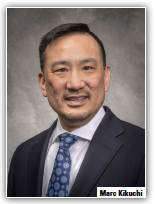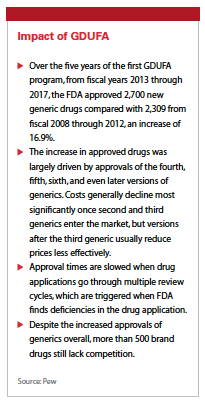Anything But Generic Leadership
 Marc Kikuchi, the newly appointed CEO of Dr. Reddy’s North America — and a 2015 PharmaVOICE 100 — discusses trends in the generics industry and how he is positioning the company for success.
Marc Kikuchi, the newly appointed CEO of Dr. Reddy’s North America — and a 2015 PharmaVOICE 100 — discusses trends in the generics industry and how he is positioning the company for success.
PV: What are some of the biggest issues impacting the U.S. generics industry?
Kikuchi: Two of the biggest issues are drug shortages and the pricing of generics. Let’s start with the drug shortages. The customer base is saying it is experiencing the worst service levels in over a decade.
We know there are three large buying groups that represent more than 90% of retail purchases. There are also three large GPOs on the institutional side of the business that represent close to 90% of total purchases. Because of these large buying groups, it’s extremely difficult for manufacturers to make product fast enough to support that size of market share. This is the unintended consequence of customer consolidations.
Because the customers are so big, it’s difficult for any one manufacturer to respond to opportunities or market disruptions. It’s just not that easy to ramp up; there is a nine- to 18-month lead time to get back into the market.
Additionally, there is a huge perception issue with regard to pricing. Generic manufacturers are vilified in the press for price increases. What’s not addressed is that manufactures may have higher costs for accelerated manufacturing or had to seek alternate sources for APIs. Generic manufacturers can’t absorb all of those increases, so we have to pass these costs on to customers. A 250% increase may sound large, but this translates to $6 or $10 for a product. Yet, brand companies are applauded for being ethical in keeping their annual price increases at less than 10% a year. People forget that if a brand’s average price is $500 and the company takes a 9% increase, that bottle just went up $45.
 Generics represent almost 90% of all prescriptions being filled, but only account for 23% of the total cost of prescriptions. Generic sales in dollars have actually declined for 30 consecutive months.
Generics represent almost 90% of all prescriptions being filled, but only account for 23% of the total cost of prescriptions. Generic sales in dollars have actually declined for 30 consecutive months.
On the positive side, the Generic Drug User Fee Amendments (GDUFA) has taken effect. The approvals are coming much faster and what this does is create more competition. For the end patient, this is a good thing.
PV: What are your predictions for the generic market for the next year?
Kikuchi: In the next year, hopefully we’ll see more stabilization in the marketplace in terms of more consistent supply and more new product launches. We were, for example, one of the lucky companies to have a true first-to-file. We launched the generic to Suboxone last June. Generic Suboxone is for the treatment of opioid abuse and because it’s in a sublingual form it has a faster onset of action. This year, we’re expected to launch more than 20 products. Every time we launch a new product or file a new product for approval, it ultimately benefits patients.
PV: How are you positioning Dr. Reddy’s in the market?
Kikuchi: We’re going back to the basics. What do I mean by that? Most generic companies want to be something they aren’t — aspiring to be brand companies or specialty companies. Additionally, brand companies are launching generic or biosimilar divisions.
At Dr. Reddy’s, we are focusing on our core capability, which is manufacturing generic pharmaceuticals. Given our expertise in the market, we are also bringing more finished dosage forms to market beyond tablets and capsules. We’re moving into injectables, and even more importantly, complex injectables that are drug-device combinations, as well as patches, creams, and ointments. We’ll continue to have a more robust portfolio that spans the full spectrum of generic products across therapeutic areas and finished dosage forms.
An emphasis on the full spectrum of generic products, including complex generics, means we will need to also have patient services. We will be providing patients with the same types of services as branded companies, which means we will need to build out those capabilities. We will also need to work not only with our traditional customers, but with wholesalers and retailers, hospitals, and IDNs. We will need to become more sophisticated and align ourselves with payers, service providers, and patients.(PV)
~~~~~~~~~~~~~~~~~~~~~~~~~
Impact of GDUFA
Over the five years of the first GDUFA program, from fiscal years 2013 through 2017, the FDA approved 2,700 new generic drugs compared with 2,309 from fiscal 2008 through 2012, an increase of 16.9%.
The increase in approved drugs was largely driven by approvals of the fourth, fifth, sixth, and even later versions of generics. Costs generally decline most significantly once second and third generics enter the market, but versions after the third generic usually reduce prices less effectively.
Approval times are slowed when drug applications go through multiple review cycles, which are triggered when FDA finds deficiencies in the drug application.
Despite the increased approvals of generics overall, more than 500 brand drugs still lack competition.
Source: Pew
















